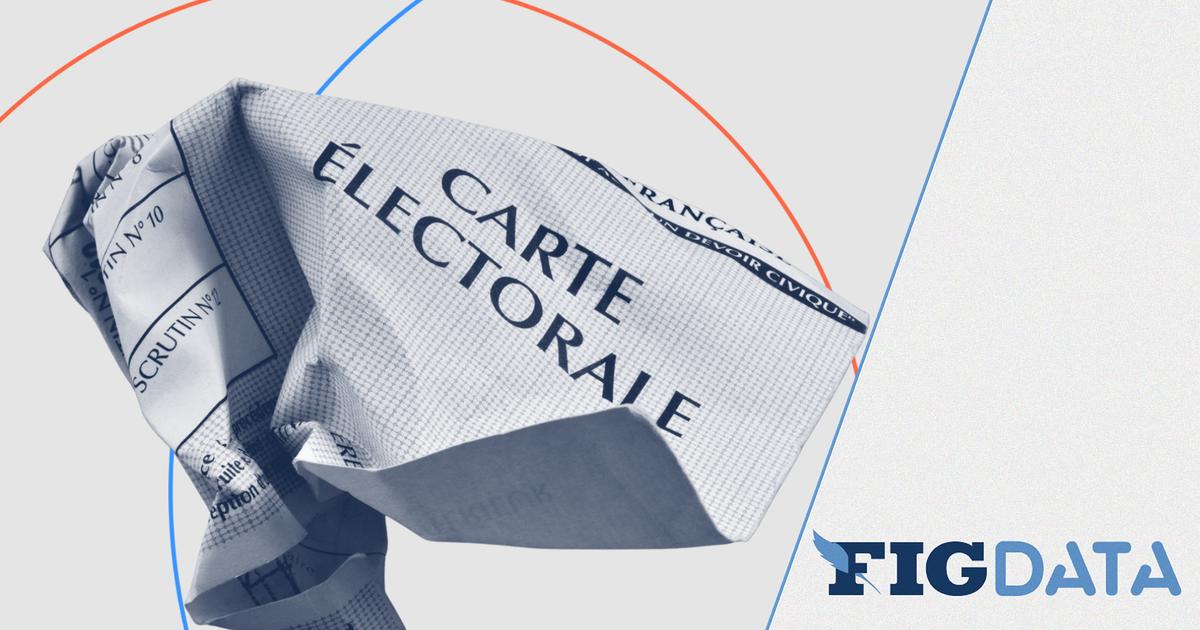Some 48 million voters were called to the polls this Sunday, June 12 for the first round of legislative elections, which are intended to renew the National Assembly for the next five years.
As in 2017, the ballot was marked by record abstention, around 51.5% according to the latest estimates.
To discover
LIVE - First round of the 2022 legislative elections: follow the election night
Find the results of the legislative elections this evening
Already at noon, the participation showed a delay.
It stood at 18.43%, a figure down 0.8 points compared to 2017 (19.24%), and 2.5 points from the 2012 legislative elections at the same time (21.06% ).
It is also down sharply compared to the first round of the 2022 presidential election at the same time (25.48%), but much higher than that of the departmental and regional elections of 2021 (12.22%).
At 5 p.m., turnout reached 39.42% on Sunday, down 1.3 points from 2017 when it stood at 40.75%.
It is also much lower, at the same time, than that of the legislative elections of 2012 (48.31%), as well as that of the first round of the presidential election of 2022 (65%).
Read alsoLegislative 2022: an uncertain first round under the threat of massive abstention
Disinterest, anger or absence of information... the causes of this phenomenon of disaffection are multiple and worry the staffs of the parties.
” READ ALSO –
Legislative elections: understand everything in the ballot
Legislative 2022:
towards a new abstention record
Despite their institutional importance, legislative elections now appear as “
second-rate
” elections.
After the relative upturn in the presidential election, the first round of legislative elections recorded a new abstention record which should favor the presidential majority.
In 2017, the ballot box strike broke records in the legislative elections: 51.3% in the first round and 57.4 in the second.
This new drop in participation is linked to an institutional logic.
Since the entry into force in 2002 of the quinquennium and of the calendar making successive presidential and legislative, this poll lost its autonomy.
For electoral specialists, such a strong abstention in the legislative elections will necessarily have political implications.
2017 and 2022: discover the evolution of abstention
Read alsoLegislative: “The “included” and seniors will, once again, be overrepresented in the event of massive abstention”
"
Young people and working classes systematically vote less than senior citizens and the middle/upper classes, but their turnout plummets during elections deemed to be secondary, for which the stakes are less clear
", insisted recently, the director of studies at Ipsos France, Mathieu Gallard in
Le Figaro
.
“
It is of course a trend which is rather positive for the presidential majority: the vote in favor of Emmanuel Macron was characterized by a strong overrepresentation of seniors and the included
”, he continues.
Legislative 2022: the abstention card
Moreover, in the event of strong abstention, the electoral system itself is unfavorable to the oppositions because with an abstention of 50%, the bar is placed at 25% of the votes cast to pass to the second round (without repechage, it takes 12, 5% of registrants to qualify).
In fact in 2017, there was only one triangular.
However, in duels combined with the tripartition of the political space (Nupes/Ensemble/RN), the outgoing majority has the advantage of occupying the central position, more likely to benefit from votes to block.

